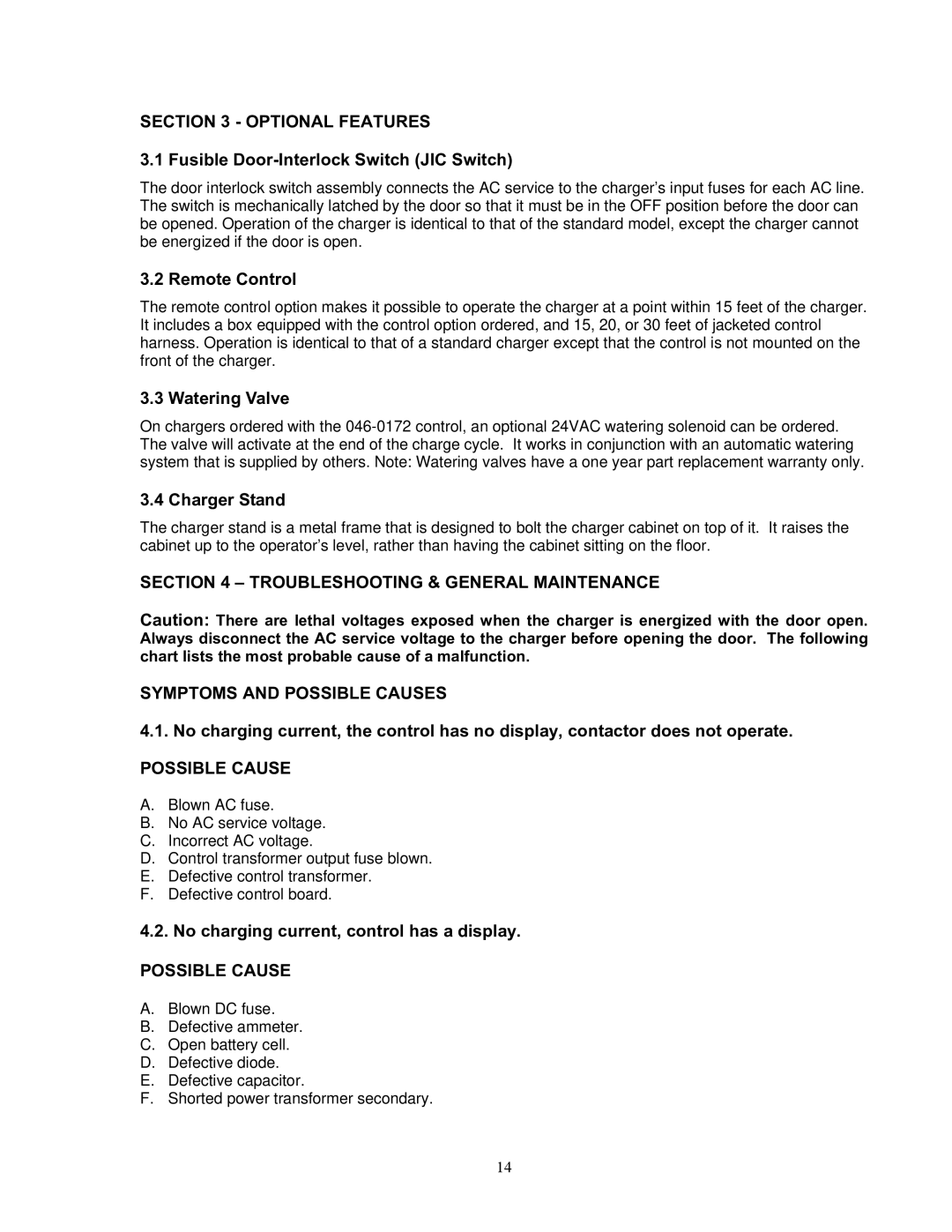SECTION 3 - OPTIONAL FEATURES
3.1 Fusible Door-Interlock Switch (JIC Switch)
The door interlock switch assembly connects the AC service to the charger’s input fuses for each AC line. The switch is mechanically latched by the door so that it must be in the OFF position before the door can be opened. Operation of the charger is identical to that of the standard model, except the charger cannot be energized if the door is open.
3.2 Remote Control
The remote control option makes it possible to operate the charger at a point within 15 feet of the charger. It includes a box equipped with the control option ordered, and 15, 20, or 30 feet of jacketed control harness. Operation is identical to that of a standard charger except that the control is not mounted on the front of the charger.
3.3 Watering Valve
On chargers ordered with the
3.4 Charger Stand
The charger stand is a metal frame that is designed to bolt the charger cabinet on top of it. It raises the cabinet up to the operator’s level, rather than having the cabinet sitting on the floor.
SECTION 4 – TROUBLESHOOTING & GENERAL MAINTENANCE
Caution: There are lethal voltages exposed when the charger is energized with the door open. Always disconnect the AC service voltage to the charger before opening the door. The following chart lists the most probable cause of a malfunction.
SYMPTOMS AND POSSIBLE CAUSES
4.1.No charging current, the control has no display, contactor does not operate.
POSSIBLE CAUSE
A.Blown AC fuse.
B.No AC service voltage.
C.Incorrect AC voltage.
D.Control transformer output fuse blown.
E.Defective control transformer.
F.Defective control board.
4.2.No charging current, control has a display.
POSSIBLE CAUSE
A.Blown DC fuse.
B.Defective ammeter.
C.Open battery cell.
D.Defective diode.
E.Defective capacitor.
F.Shorted power transformer secondary.
14
